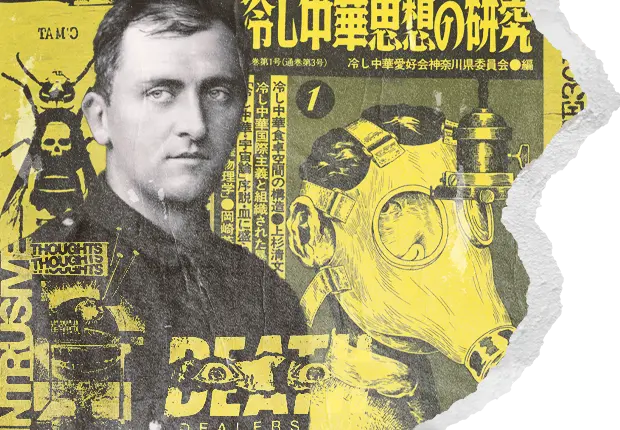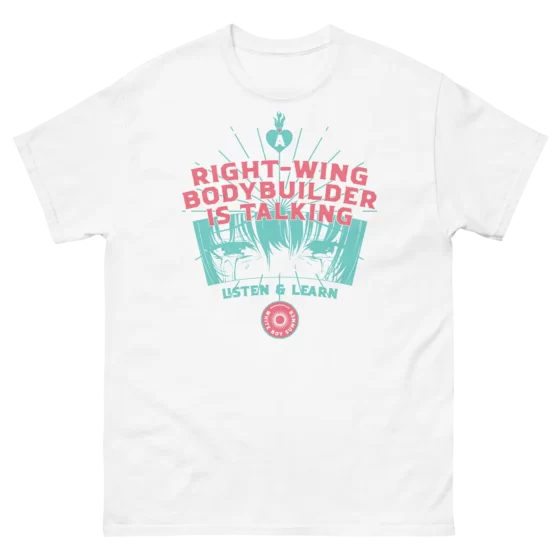T.E. Hulme: Heavyweight Modernist
Journalist
One of Jonathan Bowden’s favourite anecdotes about Wyndham Lewis was that during a fierce dispute with T. E. Hulme, Hulme frogmarched Lewis to Soho Square and proceeded to hang the Canadian painter from some railings. Upside down. Bowden, splenetic advocate of English nationalism and enthusiastic supporter of radical art, found this example of heroes refuting polite compromise and instead resorting to direct action enervating. It vindicated the credentials of these men in the most symbolic way possible and it allowed Bowden to present to his reactionary audience artists as real men, who would duel on matters of artistic leadership and aesthetics. The fact that this particular dispute was over the favours of a woman should not detract from the real importance granted philosophical ideas and artistic forms in the 1910s, the crucible of Modernism.
Poet, philosopher, translator and journalist Thomas Ernest Hulme has been credited with great influence during the Edwardian era among the tiny set of London’s Modernist poets and artists. Yet the diffuseness of his achievements vexes even the attentive. Hulme published no books in his lifetime and never held an academic position. A recent biography has slightly reduced the mythical characteristics of Hulme, drawing him as more inconstant, flawed and less easily summarised that we might have thought.
Hulme was born into a Staffordshire family in 1883. From a young age he showed a proclivity for mathematics and sports. Pugnaciousness made young Tommy a natural in his school’s debating society, where he was remembered by pupils and masters as assertive, confident and not afraid to champion unpopular positions. Hulme did not lack self-confidence. As a young man, he often heckled play performances, once to correct the actors’ faulty pronunciation.
While a pupil, Hulme wrote for his school paper and maintained journalism when he went up to Cambridge University to read mathematics. In 1904, Hulme was sent down from Cambridge after five terms for a series of public order offences—hijinks that were considered rumbunctious enough to require court hearings. (A later spell at Cambridge was curtailed even more abruptly in 1912 after he was discovered attempting to seduce the sixteen-year-old daughter of a professor.) He travelled to Canada and then spent time in Berlin and Paris, which was where he attended lectures by philosopher Henri Bergson (1859-1941).
While at university, Hulme had developed an interest in philosophy. What caught Hulme’s attention was Bergson’s idea that experiential subjective understanding of being was important. For Hulme, this insight (developed as the concept of multiplicity) allowed Hulme to reject the materialist determinism of science, so dominant in English philosophy around 1900. Starting in 1909, Hulme advanced Bergson’s ideas in articles for the British press. Bergson took a shine to the imposing Englishman with uncertain French, granting him permission to translate his writing into English. The appearance of Hulme’s translation of An Introduction to Metaphysics (1912), the most critical philosophical text by Bergson, raised eyebrows amongst those acquainted with Hulme’s schooldays, when he was consistently poor at French. It seems the translations from French relied heavily on editing and correction by Frank Flint and Michael Roberts.
As a writer, Hulme was inveterately lazy. Despite being a postponer and procrastinator, he was a journalist who operated effectively (if chaotically) under the pressure of deadlines. Hulme antagonised editors with late submissions, something that would drive even supportive colleagues to the limits of their patience. He dogged collaborators to do translation work at rates next to free, then had the temerity to criticise their material, which he could not have bettered. Reading Hulme, it is clear he had a gift for directness and rough wit; his prose is frankly conversational. He was generous with his support and just as trenchant in his disdain. The abuse he heaped on those who opposed his ideas verged on libellous, even implying physical reprisal.
Throughout his short public life, Hulme acted as a conduit and populariser for others rather than an original thinker. Herbert Read, an early editor who knew him, called Hulme “not a systematic thinker.” Fittingly, it was the intellectual looseness of Bergson that most appealed to Hulme. In response to criticism that Bergson offered little that was new, Hulme responded:
“[T]here is nothing absolutely new in either the problem or the solution of it. […] In substance the problem and its solution are the same in every generation. Every philosopher must deal with an old problem, and must escape from it by an equally world-old solution. It is impossible at this time of day to take up an absolutely new attitude towards the cosmos and its persistent problems.”
The job of a philosopher is to reanimate insights of the past.
Bergson, as Hulme saw it, restated enduring truths, which did not need to be original to be worth absorbing.
“The phrases of dead philosophers recorded in print are to most people as dead as dead kittens. In order that they may appear alive they must be said over again in the phraseology of the moment. This, then, is the only originality left to a philosopher—the invention of a new dialect in which to re-state an old attitude.”
This justification would later be central to Hulme’s supporting contemporary artists who adopted the syntax of ancient sculpture in their Modernist art.
Hulme set out grand ideas but did not enact their fulfilment. That was something to be done by those with more talent, perseverance or specialist knowledge. Hulme’s role as a vanguardist was—with the exception of his few very accomplished poems—limited to setting out the challenges and parameters of activities, rather than the activities themselves. In 1909, Hulme expressed his attitude to philosophy, which was probing yet unsystematic:
“[P]hilosophy is an art and not a science. The attitude proper to science is this. By work and effort one may discover the truth by which in dealing with this matter one must guide oneself. Science constrains; we have no freedom, we enter into it humbly to be told the truth. Now philosophy is nothing of this kind. We are free in philosophy. I grant it has all the appearance of a science. Its vocabulary and methods are those of the science, but the driving-power behind it is quite different; it merely uses the scientific terms for a purpose quite different: that of the artist. In it by work one can never discover the secret of the cosmos, one merely finds elaborate and complete ways of expressing one’s personal attitude towards it. From the outside it has all the appearance of a science. But this we might take as a piece of protective mimicry to ward off the multitude, to preserve it in its seclusion as the rarest of the arts.”
After quitting full-time education, Hulme’s athletic figure (at 6′ 2″) was initially maintained by summer cycling and year-round promiscuous sex with London shopgirls, who took his strong Staffordshire accent for Prussian. A later addiction to sweets saw his weight reach 200 lbs. Unfortunately for anyone wishing to follow his private life, as well as the development of his thought and the links he had with poets and artists, there is an absence of letters to fill in biographical gaps. Hulme was not much of a correspondent. What little he did put in letters has largely been lost. What remains is quotidian and unimportant, mainly arranging meetings. An exception is the sexually explicit love letters written from the trenches to his constant mistress Kate Lechmere.
Poet and Translator
“In all the arts we seek for the maximum of individual and personal expression, rather than for the attainment of any absolute beauty.”
Hulme declared that in a lecture of 1908. In it he advanced the argument that due to the historically cyclical nature of versification, the superior form of verse of his day would be one that eschewed stressed-syllable metres. “I have not a catholic taste but a violently personal and prejudiced one. I have no reverence for tradition.” Instead, it would be full of concrete imagery, free in form rather than regular in line length and aimed at emotional effect rather than argument. Rhyme would be unnecessary though not prohibited. This outline would become the approach adopted by the Imagists in 1909, the poetry school associated with the Vorticists. They included Hulme in their number, albeit as a largely non-practising poet. He published only six very short poems, the most well-known of which is “Autumn”.
Autumn
A touch of cold in the Autumn night –
I walked abroad,
And saw the ruddy moon lean over a hedge
Like a red-faced farmer.
I did not stop to speak, but nodded,
And round about were the wistful stars
With white faces like town children.
The stark imagery, simplicity and shortness are striking. “Autumn” is often considered the beginning of Modernist verse in English. After his arrival in London in 1909, it seems that Ezra Pound had a hand in shaping some of Hulme’s few verses, inverting Hulme’s “pavement grey” (à la Yeats) to “grey pavement”, a more crisp and concrete coupling. This would become “the hard pavement” in the final text. T. S. Eliot later posthumously rated Hulme as author of “the most beautiful short poems in the English language.”.
As a journalist, Hulme attended the 1911 philosophy conference held in Bologna. The city impressed him. “Bologna seems to me to be the perfect town. It is all compact of little piazzas flanked by arcades, and never a broad straight street or an open vista in the whole place.” Hulme again met Bergson, as well as meeting a number of other important thinkers. Émile Durkheim and Henri Poincaré were other authors who delivered papers. Hulme summarised proceedings for The New Age; although to do so he had to overcome his attraction to the festivities held near the venue, which tempted him to abandon halls for the piazza.
Hulme’s second translation was George Sorel’s Reflections on Violence, which is considered a key work in both socialist and fascist theory. This translation appeared in 1916, by which time Sorel and Hulme had moved away from the position of the book (published in French back in 1908) but it is worth considering how much more socially engaged Sorel’s writings than were Bergson’s. Hulme was not attracted by the subject of syndicalism but to Sorel’s view of man’s character, which was by no means typically socialist. Sorel saw men as inherently flawed, not co-operative nor incentive-led; their drives were often absurd or retrograde; men needed to be led and given direction, which could be imparted by myths, understanding of which in turn aided self-knowledge. Sorel’s man was neither Rousseau’s noble savage nor Marx’s rational social animal. Hulme (as Wyndham Lewis and other acquaintances noted) came to believe that Original Sin was a cardinal truth about man’s nature, regardless of his own irreligiosity. Hulme described himself as a Tory politically, with an attraction to the monarchist authoritarianism of L’Action Française and Catholicism, although he had a natural distance from these “foreign” concerns. Hulme was said to be moving closer to Catholicism and (more contentiously) towards democracy in his last years.
Attending the Kongress für Ästhetik und allgemeine Kunstwissenschaft (Congress on Aesthetics and General Art), held in Berlin over 7-9 October 1913, sharpened Hulme’s engagement with the visual arts. Most experts consider him not a serious thinker. He is rarely included in general surveys of philosophy. Hulme’s interest in French and German philosophy allowed him to become a conduit first for Bergson, then Sorel, then Wilhelm Worringer (1881-1965). Some see Hulme’s aesthetic ideas to be lifted wholesale from Worringer’s first two books Abstraction and Empathy (1907) and Form in the Gothic (1911), which Hulme apparently read in the German, perhaps glossed by associates who understood the language better than him. As a populariser and pioneer, Hulme’s role was always to be a champion rather than originator.
When Hulme found a way to connect ideas to a great artistic talent, he found his calling as a critic of sculpture.
Art Critic
“I am moved by Byzantine mosaic, not because it is quaint or exotic, but because it expresses an attitude I agree with.”
As Hulme’s thought changed, he began to see the significance of art over science (and even over philosophy) in addressing matters of importance for man. As Bergson had explained, images aid thinking better than abstractions. In the seminal essay “Romanticism and Classicism” (1912) Hulme fused aesthetics with his tragic view of flawed humanity.
“One [worldview is], that man is intrinsically good, spoilt by circumstance; and the other that he is intrinsically limited, but disciplined by order and tradition to something fairly decent. To the one party man’s nature is like a well, to the other like a bucket. The view which regards man as a well, a reservoir full of possibilities, I call the romantic; the one which regards him as a very finite and fixed creature, I call the classical.”
According to Hulme, the Romantic believes “if you can so rearrange society by the destruction of oppressive order then these possibilities will have a chance and you will get Progress.” The classically-minded man knows that structure is necessary to get anything out of men, but that this cannot be structured in an idealistic egalitarian manner.
In terms of art, Hulme posited that after a century of Romanticism there would come a natural swing towards Classicism, but it would be a perennialistic core rather than an adoption of the Neoclassicism of 1790. This made Hulme’s nomination of unflinching Modernism as the new form of classicism all the more striking. He saw Modernism, especially of the geometric type (found principally in Cubism, Futurism and some direct carving), as indicative of classical severity and precision that countered the softness of Romanticism. Classicism would be more suited to the coming century.
All over Europe in the 1909-1914 period we find vanguard Modernist movements stirring up animus against the establishment and the lingering remnants of the art of their fathers and grandfathers. Cosmopolitan Realism, Impressionism, Symbolism, Art Nouveau. Expressionists, Cubists, Rayonists, Orphists, Suprematists, Blaue Reiter and (most of all) Futurists were all issuing manifestoes and declaring that the incumbent styles of the academies and professional organisation were moribund and impeding the natural evolution of art. In other words, the younger generation wanted a share of resources that was theirs by priority of their vitality exercised through exclusive new styles. In London there were American immigrant Jacob Epstein and the nascent core of the Vorticists, led by Canadian painter-writer Wyndham Lewis. Hulme was more partial to the presence of sculpture than to the colours and planes of painting.
Hulme championed rebarbative art that dared to defy current conventions; the most notable example was Jacob Epstein’s Rock Drill (1913-5). This sculpture combined a life-size Cubo-Futurist worker mounted on an actual pneumatic drill on a tripod. Hulme dedicated many articles and letters to defending the art of Epstein, which combined Modernism and the influence of Assyrian carvings. The sexual aspect of the early carvings in Flenite stone appealed to the writer, who had a strong libido and thought that such primal drives were an essential components of any vital art. Hulme was an ally of the Vorticists rather than an advocate for them.
Hulme has been seen as a champion of Pre-Renaissance, anti-Enlightenment thought. He believed that art of the Renaissance marked a decline from the heights of ancient art and the Byzantine era (particularly the mosaics of Ravenna) because artists had lost religious feeling. Regardless of the verity of God’s existence, religious feeling was natural for man, Hulme thought. Hulme’s view was that once Neoplatonism had centred man (rather than God) as a centre of authority, the sacred link between God and artist was broken, denuding art. He set himself against the relativism of humanism, seeing the “mushiness” of Romanticism (“like pouring a pot of treacle over the dinner table”) as synonymous with liberalism, democracy and egalitarianism.
Although well informed about new art, Hulme was not always prescient in his predictions. For example, he considered abstraction to be an outgrowth of Cubism that would die out for lack of invention. Hulme’s advances in thinking were impressive. He was rapidly absorbing knowledge of high Modernism at the time when the war dramatically restricted attendance at art venues and reduced the time available for writing. Intelligent written material was almost all confined to the French press. Hulme’s biographer summarised the writer’s significance as a critic:
“Hulme, with his championship of Bomberg and Epstein, and Pound, who made writing about Gaudier-Brzeska his speciality and secured Gaudier’s reputation after his early death, were the only critics writing seriously about the abstract art of the years that mark the true beginning of Modernism in England. Hulme’s support for Epstein is particularly remarkable.”
Like Lewis, Hulme was disdainful of the Bloomsbury Group and its leading art theorists Clive Bell and Roger Fry. However, Hulme also thought that Lewis’s Rebel Art group was less than impressive in terms of accomplishment. When this view appeared in print, Lewis fretted that his achievements were being overshadowed by his rival Epstein. In his view, Epstein’s personal friendship with Hulme meant his sculptures were preeminent in the writings of Hulme, perhaps the leading public supporter of Modernist art in Britain.
The opening anecdote (about a tussle between Hulme and Lewis) was only one story featuring Hulme’s belligerence. The claim that he had a knuckleduster, which he would display to terminate arguments, seems to have been (probably) an exaggeration. He did carry a small piece of sculpture by Henri Gaudier-Brzeska, but it this was more of a toy and sentimental object rather than a device to threaten. Although Hulme was not averse to expanding a dispute into the realm of physical violence I have not found any report of him actually using his knuckleduster on anyone. He did not always have to threaten violence, his imposing size discouraging dissent. When war was declared, no one was surprised when Hulme volunteered with alacrity to join the army.
Soldier
“The privileged class is beaten only when it has lost faith in itself, when it has been penetrated with the ideas which are working against it.”
Was Hulme’s militarism and bellicosity an inherent part of his aesthetics or was it just incidentally parallel? Hulme admitted he found the sight of marching soldiers exciting and he was a natural joiner in team sports. Hulme was known to threaten opponents in debates. One opponent described him in debates as like a heavyweight boxer, who was not lithe but could strike a powerful blow if he could land a punch. Hulme’s rejection of post-Gothic art—that is, the Renaissance and its associated Neo-Platonist humanism and preference for Apollonian reason over more urgent Dionysian drives—maps on to his acceptance of combat as an expression of man’s deepest primal loyalties.
In Hulme’s support for the war (when it came) one finds an echo in the enthusiasm of fellow artists Gaudier-Brzeska, Franz Marc and Umberto Boccioni. Like them, he was to die in a war he considered reasonable and necessary. He considered the war a chance to uphold Englishmen’s qualities against foreigners, as almost a sporting contest. Hulme volunteered for active duty in the infantry as an enlisted man, without a thought for taking a commission as an officer. It seems his aversion to authority persisted. He kept up a diary-cum-correspondence during his early months, recording the spectacles of campaign near Ypres. He had an acute eye and turn of phrase but there is nothing of belles lettres in the text, a remarkable and gripping series of entries that neither revel in nor shy away from the barbarity and banality of trench warfare. Hulme had put his brief days as a poet long behind him.
Writing journalism justifying the war (although deploring the tactical errors of the British), Hulme did not revert to poetry and is not numbered among the soldier-poets of the Great War. He wrote as “North Staffs” in the British press, opposing the “Rousseauist” pacificism of Bertrand Russell, with whom he crossed swords in print. One of Hulme’s pieces rebutting Russell was (bluntly) titled “The Kind of Rubbish We Oppose”. Another task that preoccupied Hulme was writing on a book on Epstein. Hulme’s work on a long essay and selection of images had apparently reached an advanced stage by autumn 1917. Wrangles with the publisher over payment and Hulme’s reservations about Epstein’s current art caused tension delayed the book. Hulme’s preference for Epstein’s most uncompromisingly geometric, abstract and overtly Modernist sculptures underlay his reservations regarding Epstein’s most recent portrait busts.
On 14 April 1915, during the battle for the mound of St Eloi, Hulme was shot in the arm. The bullet that injured him went through to kill the man behind. The other man was a skilled footballer and Hulme commented laconically that, had they had a choice in the matter, his battalion would have preferred to have lost the philosopher rather than the footballer. Hulme was sent to convalesce in Chelsea. While there, he recited lines about the war to Pound. Hulme would not commit them to paper so Pound transcribed them. When he was fit to, he resumed his rounds of gallery-going, studio visits and attendance at literary salons.
Hulme was certain of the need to fight Germany and the righteousness of war, even if he disparaged some of the leadership and the tactics of his side. Battle had lost much of its glamour for Hulme, but not just due to the squalor. The boredom grated; the absurdity of ways men met their fates made their deaths meaningless; the ignominy of annihilation by “friendly fire” was appalling. Hulme did not choose to stay behind the front lines, as he might have as wounded combatant with influential friends. Instead, he volunteered to return. To avoid the wretchedness of trench occupation, Hulme joined the Royal Marine Artillery as an officer, stationed on the Scottish coast for some months before being posted to Flanders. The trajectory of cannon fire appealed to his mathematic turn of mind.
Hulme died on 28 September 1917, when the position his gun occupied came under shelling. It was said that the whistle of the incoming shell warned the naval gunners to duck but that Hulme was lost in thought and was killed instantly in the explosion. No trace was found of Hulme’s Epstein-book manuscript. Epstein believed the manuscript was lost or stolen from Hulme’s billet but everyone else at the time thought the shell that destroyed the author also destroyed the manuscript of his book. Hulme himself remarked that one had to keep personal possessions on oneself during duty, as billeting and deployments were ordered without forewarning.
In coming years, Hulme’s slender output of essays and lecture texts were republished. The great success and acclaim accrued by Pound and Eliot reflected (in part) Hulme’s assertive admonitions, although only the initiated would have realised this. While Hulme’s name stayed unfamiliar to most supporters of British Modernism, his reactionary positions ended up becoming a pervasive but mainly hidden legacy. It has been convenient for academic champions of Modernism to deliberately downplay the reactionary aspects of literary and painterly vanguardism of the era, which has meant discarding (or mentioning in only perfunctory manner) this short-lived writer who wrote no single book and published no volume of poetry. Yet, if you are attentive, you will find some of the greatest talents of that age owed much to this under-appreciated giant.
FURTHER READING:
T.E. Hulme, Herbert Read (ed.), Speculations, 1924, Routledge & Kegan Paul Ltd, London
T.E. Hulme, Sam Hynes (ed.), Further Speculations, University of Nebraska Press, Lincoln, 1962
Robert Ferguson, The Short Sharp Life of T. E. Hulme, 2002, Penguin Allen Lane, London
































